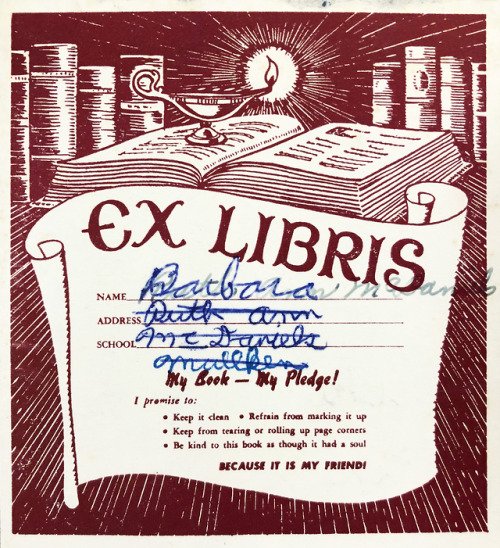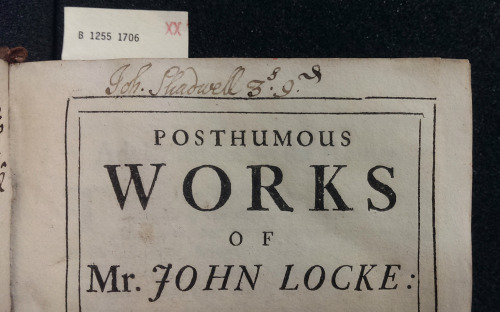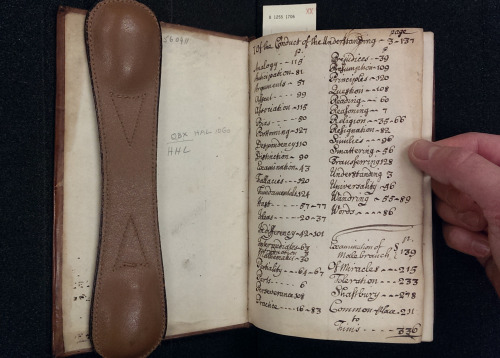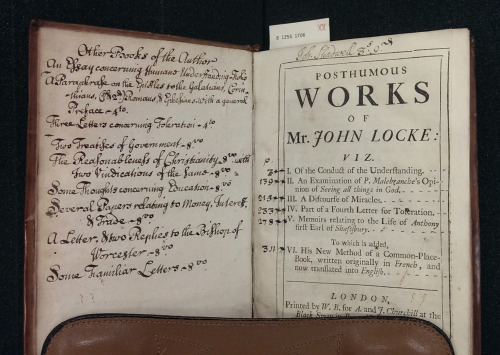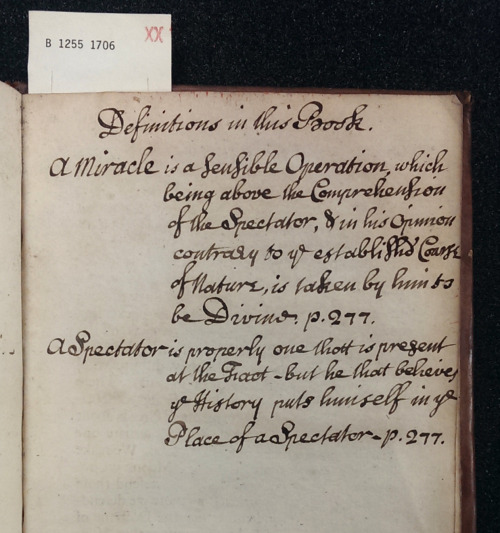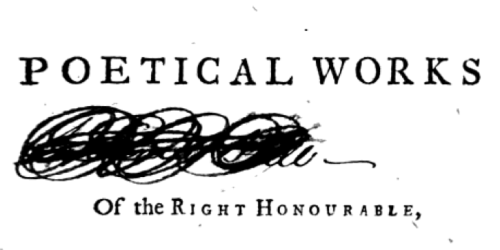#writing in books
Over the years, many primary and secondary schools have employed bookplates to admonish students against marking up their textbooks. These three examples all come from 1940s American school books, but each one delivers its message in a very different way!
Some school bookplates, such as this eye-catching red one pasted into a 1942 third-grade grammar book, are touchingly poetic, requiring that its owner promise to:
Keep it clean; Refrain from marking it up; Keep from tearing or rolling up page corners; Be kind to this book as though it has a soul
Because it is my friend!
Other examples seem a bit more sterile, by comparison. The language used in this 1947 French textbook, for example, matches the plain, utilitarian design of the bookplate:
Please do not write in this book. Remember that other students must use it later. Please keep it as neat and unsoiled as you can. Your cooperation in this matter will be appreciated.
Our final bookplate, from a 1946 English reader, is decidedly more… civic-minded. Issued and owned by the State of Arizona, this label outlines what it calls the “Good Citizenship Code For Pupils Using State Textbooks”, a set of rules that includes such pledges as:
I will respect and take care of the property of the State.
I will keep my books clean outside and inside.
I will not spoil their pages with finger prints.
I will guard my books as a trust from the State.
I will keep my books fit for those to use who come after me as I expect those who come before me to keep their books fit for me to use.
Of course, as we have seen over andover andover again, schoolchildren were generally not afraid to mark up their textbooks. We’ll leave it to our followers to decide which books (in the words of that first bookplate) have more soul: the clean, unmarked copies or the used and soiled ones.
Post link
Posthumous Works of Mr. John Locke(1706)
This collection of writings by notable Enlightenment philosopher John Locke contains a number of interesting (and fairly common) marks of use, in the hand of former owner John Shadwell.
Early books were not usually printed with indexes, so many owners added their own, often on one of the flyleaves at the front or back of the book. This volume features one such handwritten index—a list of subjects discussed in the first part of the work—alphabetized and with references to page numbers as in today’s printed books.
But no index is ever really exhaustive, and an owner’s decisions about what to include can reveal a lot about what he thought was important in the text. Creating an alphabetized index (even a short one like this) is also a time consuming affair, and requires a great deal of familiarity with the work. Such an index is a testament to the importance of this book to its previous owner.
Our former owner has also added a handwritten list of other works by the author (he was evidently a big John Locke fan), and started to define certain key concepts in the book—although he seems to have stopped after providing Locke’s definitions of “a miracle” and “a spectator.”
http://catalog.lib.msu.edu/record=b1158883~S39a
~Andrew
Post link

